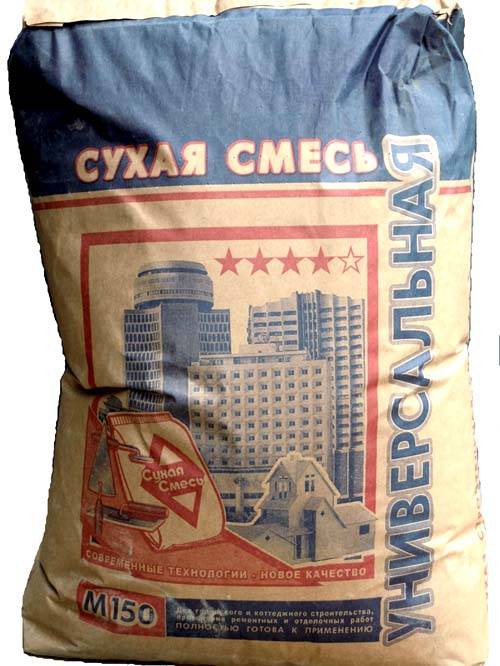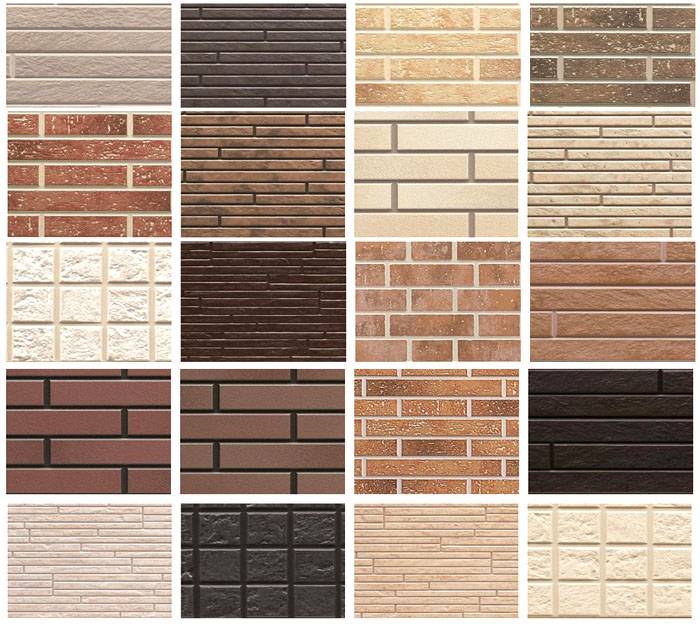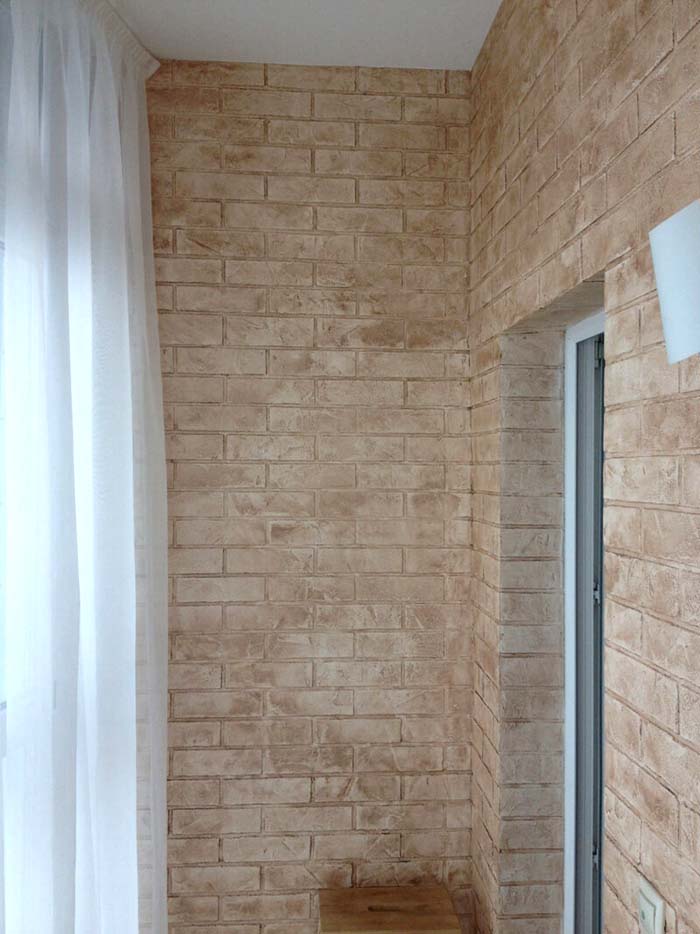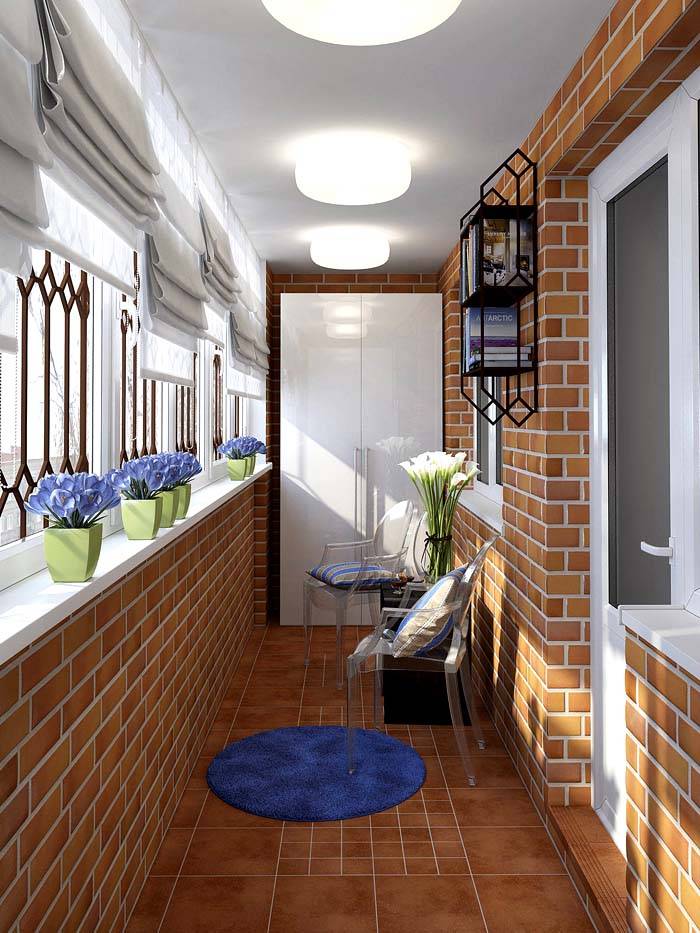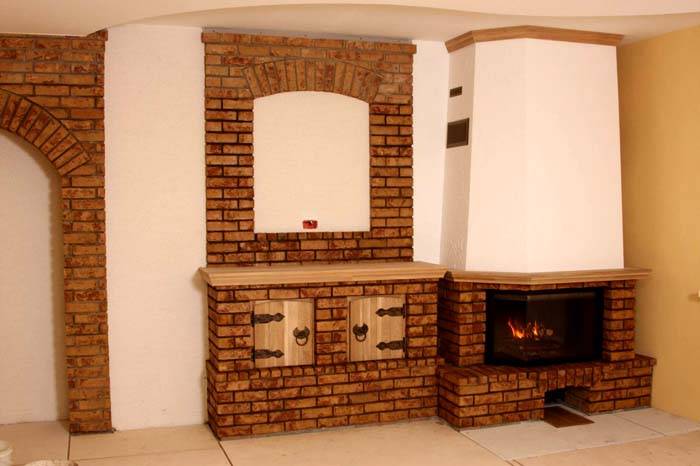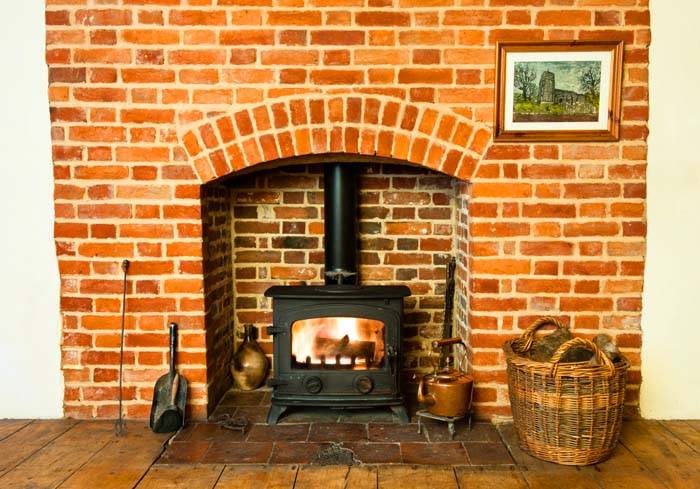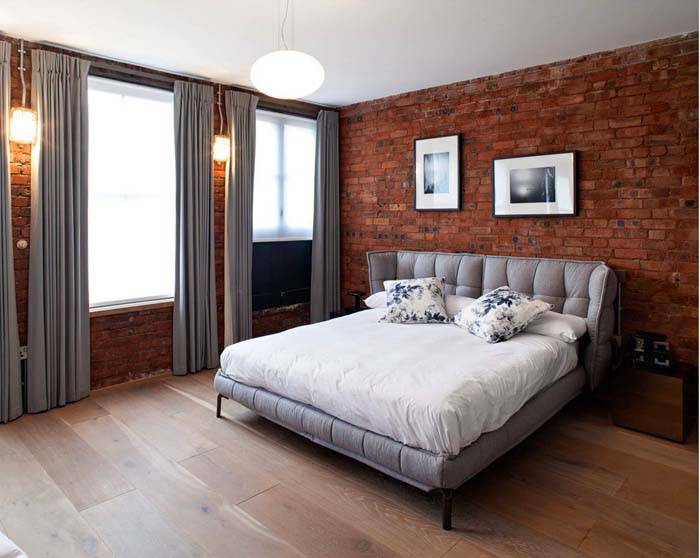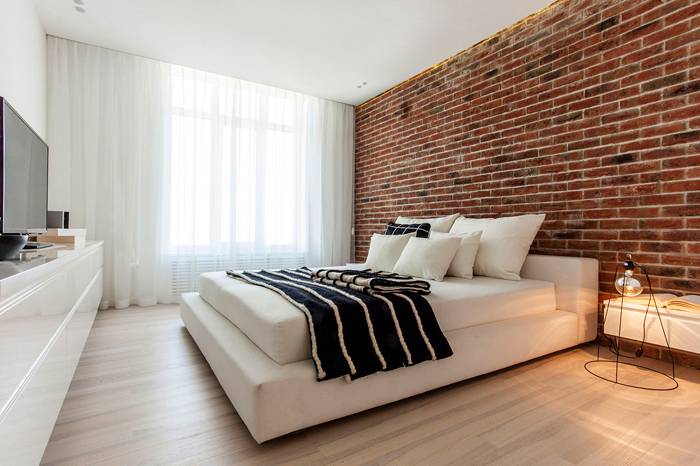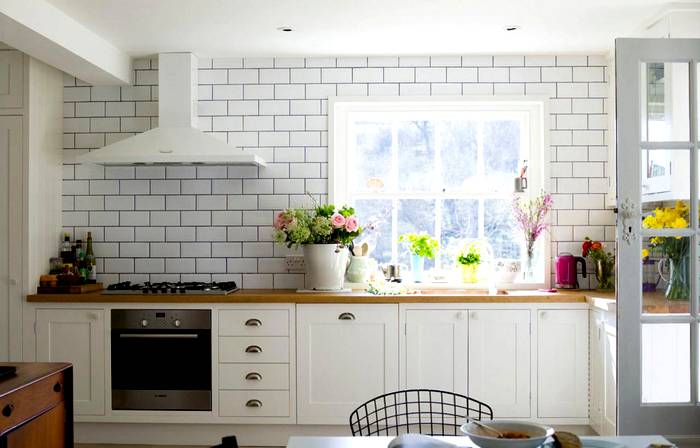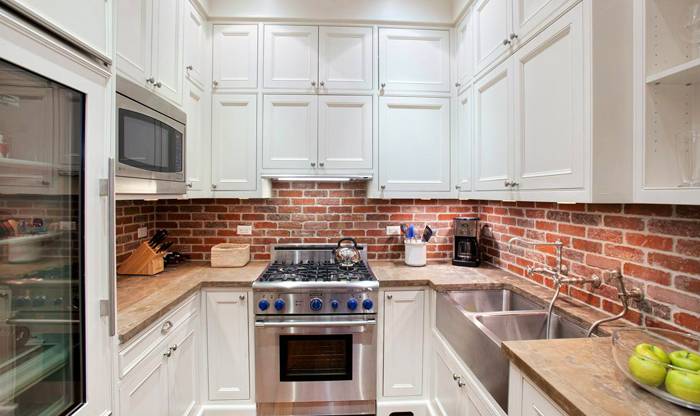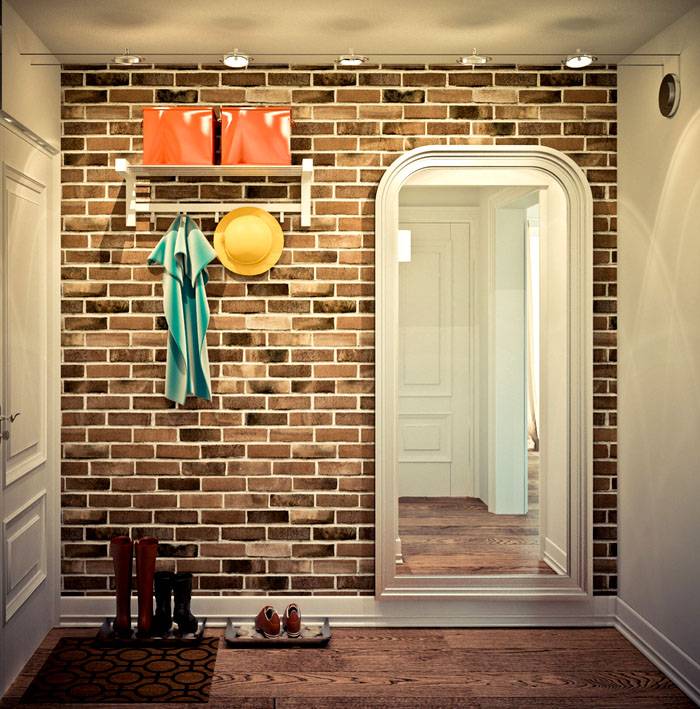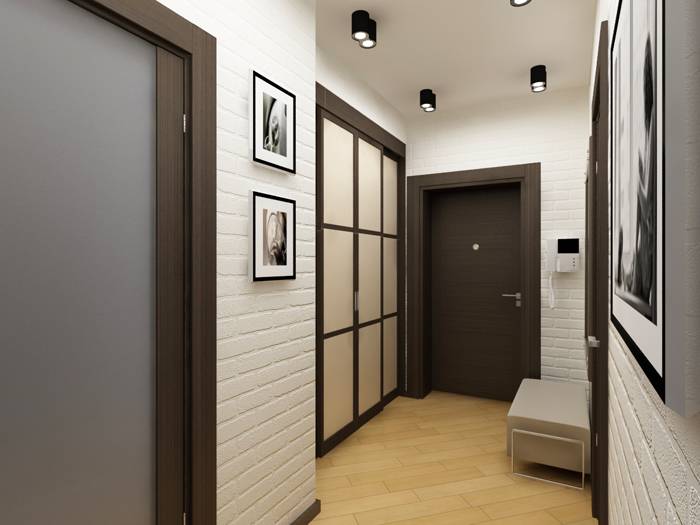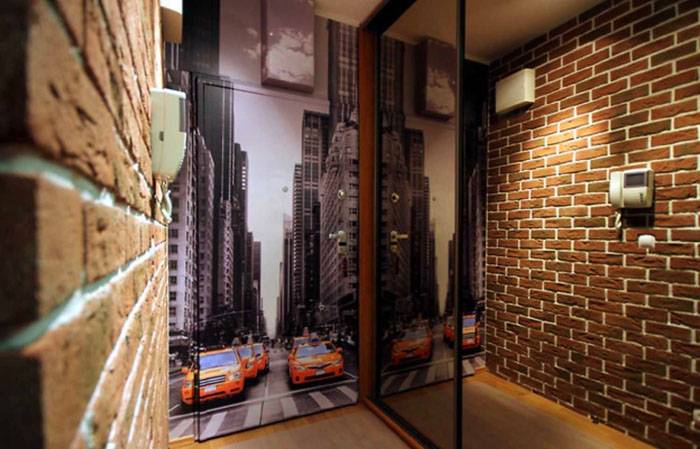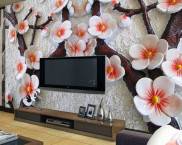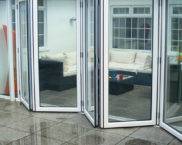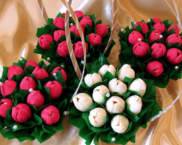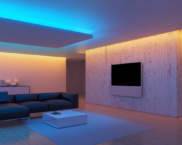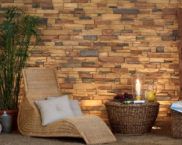Choosing a decorative brick for interior decoration
For a person who first meets this type of finishing material, the word "brick" may surprise. After all, this is a rather heavy thing and at first glance is not at all suitable for decorating walls inside premises, especially residential ones. But it's not all that bad. Decorative bricks for interior decoration are tiles up to two centimeters thick. The surface of the tiles, their length and width are the same for the whole series or type. Therefore, the surface faced with this material visually and by touch creates the impression of a wall lined with ordinary brick.
The content of the article
- 1 Types of decorative bricks
- 2 Making gypsum decorative bricks
- 3 Decorative cement bricks
- 4 The use of clay and granite chips
- 5 Other ways of wall decoration "brick"
- 6 How to choose a decorative brick for interior decoration
- 7 Architectural and design solutions for interior design
- 8 Decorative brick in the interior. Photos of options for its application
- 9 Execution of works
- 10 Video: DIY decorative brick
Types of decorative bricks
The main difference between the types of decorative bricks lies in the material from which they are made. This could be:
- Gypsum,
- Cement,
- Ceramics,
- Porcelain stoneware.
Sizes, color and surface texture can be different for each material and the same for different materials. It all depends on the production technology, the dyes used and the ideas that guide the manufacturers and customers.
Making gypsum decorative bricks
Gypsum is the lightest raw material for making decorative bricks in the literal and figurative sense. Lightweight and easy to use, gypsum allows the production of finishing material right at the workplace with your own hands. To do this, you only need to have desire, patience, plaster itself, water, dyes and molds for casting.
Helpful information! To make it easier to remove the finished elements from the mold, it is necessary to lubricate it. The grease is available from retail outlets. Which one depends on the material of the forms.
Molds can also be made by yourself. From the same plaster, concrete, wood or foam.This allows you to get parts of such a size and surface texture that sellers of finished decorative bricks cannot offer. It remains only with the help of a mixer to knead the "dough" in the container, add the desired dye to it, grease the mold, pour the solution into it and wait until it hardens. Even without experience, by trial and error, you can quickly master this simple technology.
Decorative cement bricks
The main difference between cement and gypsum is weight and color. Cement is heavier than gypsum. Gypsum is usually white and cement is gray, although it can be colored. Otherwise, the manufacturing technology is the same as for gypsum.
Currently, there are other bulk materials and dry mixes similar to gypsum and cement on the building materials market. They can also be used to make facing bricks.
The only significant drawback of decorative bricks made of gypsum or cement is its fragility. Therefore, when working with him, you need to be careful. On the other hand, this lack of strength makes it easy to cut into pieces for use where needed.
Of course, manufactured in an industrial environment, such a material will have greater strength and better appearance. There is one minus - in terms of colors and sizes, you will have to choose from what the market offers.
The use of clay and granite chips
Clay is a raw material for making ceramics. By adding granite chips to the clay, the raw material for porcelain stoneware is obtained.
Ceramic and porcelain stoneware products are manufactured on an industrial basis, because molded products are processed in kilns at high temperatures. This is difficult at home and on a construction site. Handicraft producers cannot guarantee the quality of their products.
Helpful information!When buying, you need to be very careful and it is best to contact companies that have all the relevant certificates.
Facing material made of ceramics or porcelain stoneware has high quality indicators. It is difficult to break and split. It is heavier to saw and practically does not wear out. It can be washed and wiped without fear of damaging the surface texture and color.
Other ways of wall decoration "brick"
The modern building materials market is rich in other finishing materials that allow you to decorate the interior in the style of brickwork. Made of PVC flexible decorative brick-like tiles for interior decoration. Some manufacturers offer collections of PVC and MDF decorative brick panels. Tile and panels differ in that they are not separate elements, but whole panels with an area of up to several square meters. They can be mounted directly to the wall or to the lathing of wooden bars or metal profile... They are much cheaper than decorative bricks and easier to work with.
How to choose a decorative brick for interior decoration
In order to choose the right decorative brick for interior decoration of surfaces that will be decorated with it, you need to know some properties of the material from which it is made.
Gypsum
Gypsum is a material that is not moisture resistant. In order to somehow protect products from it from moisture absorption, they must be varnished or some other special protective means. Low moisture resistance, along with fragility, determine the use of decorative gypsum bricks in places where there is no high humidity, and where the cladding is not threatened by mechanical stress, where there will be no need to frequently wipe it.
Cement
Resistant to moisture and slightly stronger than gypsum, the facing material made of cement gives more freedom in its use.But it still should not be used for cladding outside corners, which are often prone to impacts when carrying heavy objects.
Ceramics
Ceramic decorative bricks are distinguished by the following qualities:
- Able to withstand quite significant loads,
- Does not deform at large temperature differences,
- Not afraid of frost
- Porous, which makes it a good heat insulator
Porcelain stoneware
Similar to ceramic, porcelain stoneware brick differs:
- High mechanical strength,
- Frost resistance,
- Moisture resistance,
- Resistance to temperature extremes,
- Protected from absorbing dust and dirt,
- Easy to clean.
These qualities allow the use of ceramic and porcelain stoneware decorative bricks on almost any surface indoors, as well as on loggias, terraces and verandas... This material has proven itself perfectly when facing stoves, fireplaces and chimneys. If necessary, they can also be clad with the outer walls of the house. And the strength of porcelain stoneware allows you to use it for flooring in rooms.
Related article:
Standard brick: dimensions and characteristics. Which brick should you choose? What parameters does it have? About this and much more in a separate publication of our portal.
Architectural and design solutions for interior design
Modern technologies and the widest range of raw materials, dyes and shapes make it possible to give decorative bricks for interior decoration in a variety of sizes, colors and shades. This, in turn, allows you to design and implement a huge number of decoration elements, from individual parts of the rooms to the interconnected interiors of individual rooms for the whole house.
The owners themselves can decide how certain rooms will look like inside the house, how to decorate a fireplace or entrance groups. But it is better to consult with design specialists. People with special education and experience in this matter will help you choose the facing material depending on the size of the rooms, on the location of the lighting sources. They will take into account the general layout of the building, the level of humidity and areas with possible temperature changes and, most importantly, the color preferences of the inhabitants of the dwelling for common areas and for each private room, be it bedroom or cabinet.
Decorative brick in the interior. Photos of options for its application
Below are photos of decorative bricks in hallway interior:
Execution of works
Buy a decorative brick for interior decoration, ready-made or do it yourself, revet the walls with your own hands, or contact a company that specializes in providing such services? The decision about this should be taken depending on the presence or absence of their own skills and abilities and financial capabilities. The time factor is also important. In any case, you need to understand that specialists will complete the work faster and better.
If you decide to do everything yourself, then, when selecting raw materials and materials, it makes sense to listen to the advice and recommendations of sales consultants. Having all the information about the offered goods, they will help you to better select components for making bricks, adhesives, mastics, forms, dyes and tools so that the work does not cause unnecessary surprises and disappointments. You can also consult with them about the technologies for preparing forms, mixing mixtures, terms and conditions for drying brick and its stickers on surfaces intended for facing.
Helpful information! If the outlet cannot answer the questions asked, then it makes sense to contact another store, where they will give full advice.
In the case when it is decided to entrust the execution of work to specialists, the customer has to deal with the issues of project coordination, financing and control over the quality and timing of work.
The price of decorative bricks for interior decoration depends on many factors. This is both raw material and its quality. These are production technologies and the "brand" of the manufacturer. Trade margins and discounts per purchased quantity also play a role.
For comparison, you can see the prices for individual collections from some manufacturers.
Table 1. Average cost of decorative bricks
It is impossible to cover the entire range of prices and collections for this facing material in one article. Moreover, each collection includes several sets, differing in shades of colors from the lightest to almost black.
Helpful information!When coordinating design solutions for each room and interior element, it is necessary to take into account the availability in the nearest shopping centers of affordable and quality material offered by designers or the possibility of supplying it to order. Then the work will be completed on time and their cost will not greatly exceed the estimate.
Video: DIY decorative brick






